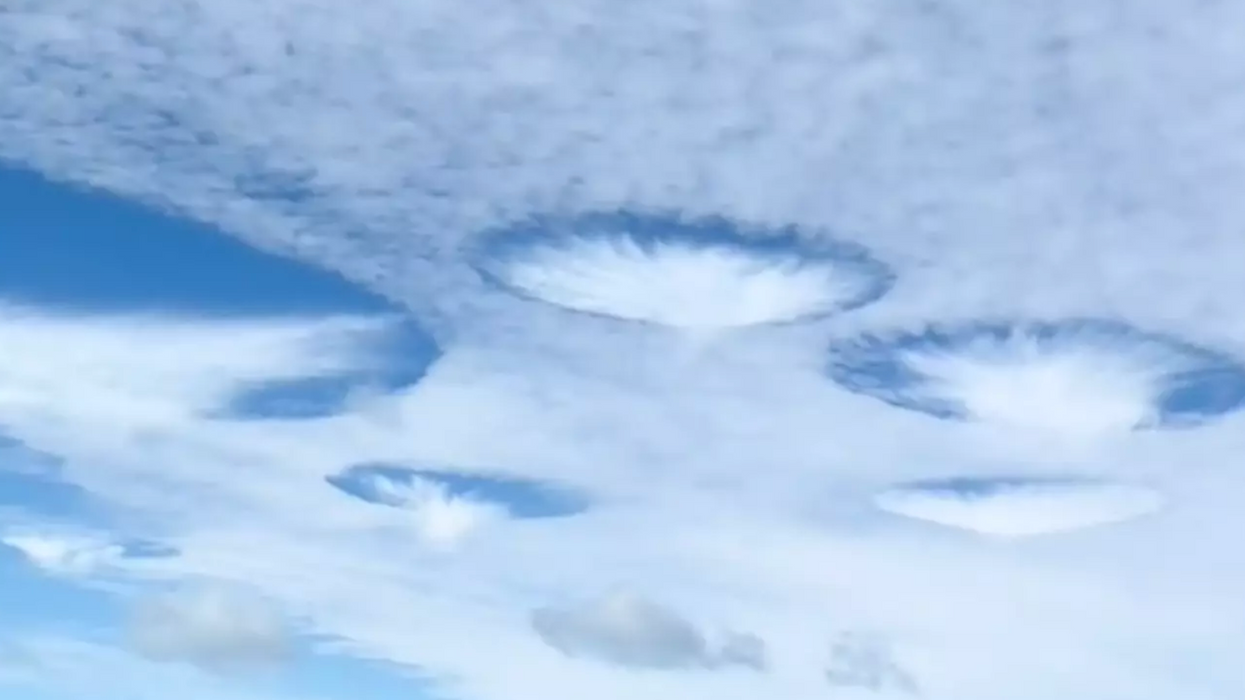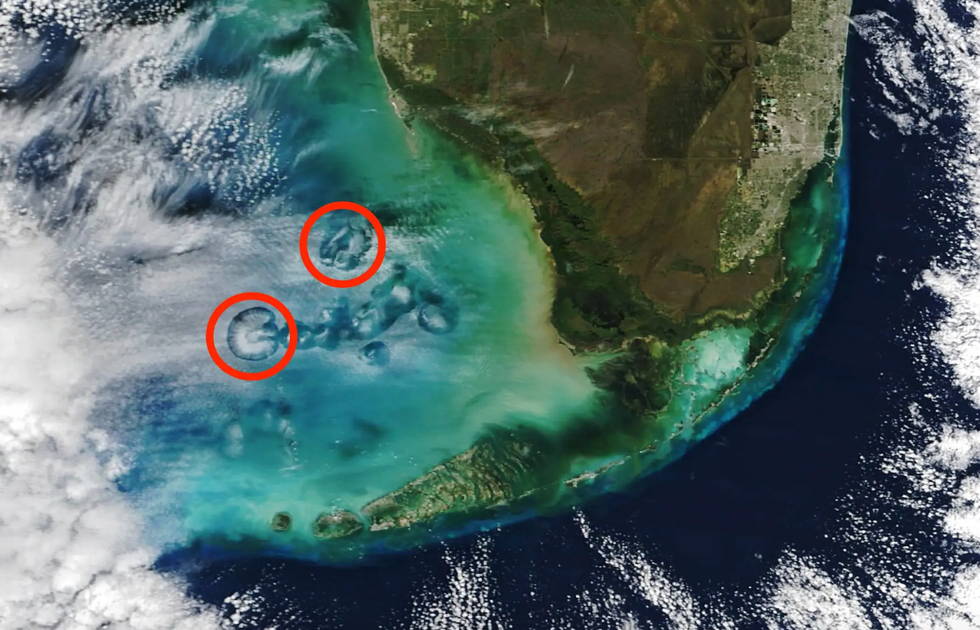Becca Monaghan
Mar 04, 2024

@blacktiph/TikTok
NASA has confirmed the reasoning behind the bizarre holes in clouds phenomenon that has taken over TikTok.
A fisherman in Florida spotted the clouds in late January, asking in the caption: "Has anyone seen clouds like these before? We were fishing off Key West."
The footage was then shared to TikTok (@blacktiph) where it racked up more than six million views.
"Dude, look at these clouds," one said while showing a cluster in the shape of UFOs. "What is going on? What is that?"
The comments section was soon flooded with over 20,000 fellow TikTokers in awe of the fisherman's discovery.
"I've seen enough Alien invasion movies to know exactly what those are," one joked, while another added: "Never seen this is 50 years of my life but the TikTok experts say it's normal."
A third humoured: "It’s a common phenomenon called 'woahtizat' it’s when the clouds do this in the middle of the ocean and then people witnessing it ask what is that."
@blacktiph Has anyone seen clouds like these before? We were fishing off Key West #strange #weather #clouds
While theories spiralled under the footage, space agency NASA offered a much more logical explanation.
Researchers have been delving into the phenomenon since the 1940s, only having come up with a reason 15 years ago.
On this occasion, NASA was able to capture the odd-looking clouds from its Terra satellite.
They are called cavum clouds, or 'hole-punch clouds'.
"It’s now well understood that these odd cloud formations are caused by airplanes," Nasa Earth explained in an Instagram post.
They continued: "Cavum clouds form when planes fly through banks of altocumulus clouds, mid-level clouds that have supercooled (below the freezing point of water but still liquid) water droplets. As air moves around the plane, a process called adiabatic expansion can make the droplets freeze into ice crystals! The ice crystals eventually grow heavy and fall out of the sky, leaving a hole in the cloud layer."

"Seen from below, they can look like a large circle or ellipse has been cut neatly from the clouds, with feathery wisps left in the middle of the hole,” NASA explained on its website.
"They are equally impressive when seen from above. This image shows a cluster of cavum over the Gulf of Mexico off of Florida’s west coast on January 30, 2024."
How to join the indy100's free WhatsApp channel
Sign up for our free Indy100 weekly newsletter
Have your say in our news democracy. Click the upvote icon at the top of the page to help raise this article through the indy100 rankings.
Top 100
The Conversation (0)













